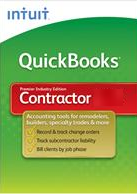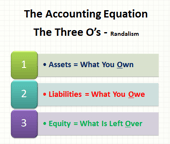Hiring an accountant is widely considered best practice for small business owners. But delegating financial analysis and reporting doesn't mean thoroughly checking out of the process each month or quarter. On the contrary, it's recommended that business owners work closely with their accountants throughout the year to better understand their financial position and make smart plans for future growth.
We have discussed time and again the importance of knowing the difference between Construction Accounting and Regular Accounting. For the sake of our new readers, blog subscribers, and podcast listeners, I'll be providing you with some basic accounting knowledge so you can have more informed, insightful discussions with your financial advisors before the year ends.

1. Cash Flow
Do you have more cash flowing into your business each month than you payout to cover costs and expenses? If so, your accountant will conclude that you're "cash flow positive." If the opposite is true, your cash flow statement will reveal that you're "cash flow negative."
Having excess cash on hand means you're better equipped to keep up with debt, cover unforeseen expenses, and invest in growth opportunities. Your accountant can generate a cash flow statement each quarter to keep tabs on this key performance indicator.
2. Profit and Loss Statement
The profit and loss statement (also known as the income statement) is one of the most important documents used by accountants to determine the profitability of your business.
The P&L statement lists revenues and gains as well as expenses and losses over a specific period (typically every three months for small construction businesses). It calculates your all-important "bottom line," so you know if you're operating at a loss or turning a profit.
3. Gross vs. Net Profit
Gross profit is what remains when you subtract the cost of goods sold (COGS) from your total revenue. Net profit, on the other hand, drills deeper. It reveals your exact dollar per profit of sales after subtracting all operating expenses, including COGS, taxes, and interest paid on debt, among others.
Gross and net profit are both profitability ratios. They are key for measuring business performance against an industry benchmark and your competitors.
4. Balance Sheet
The balance sheet offers a snapshot of your overall financial position at a particular moment in time. It lists the assets (such as cash, inventory, accounts receivable, and equipment); liabilities (like accounts payable, income tax, and employee salaries); and shareholder capital. In a nutshell, the balance sheet shows what you own, as well as what you owe.
5. Accounts Receivable & Accounts Payable
Simply put, accounts receivable is money customers owe your business for goods or services sold. It is considered an asset on your balance sheet. Conversely, accounts payable is money you owe suppliers and any bills you have yet to pay, so it's listed as a liability on your balance sheet.
Perhaps you're wondering if you're doing everything you can to boost revenue and cut costs? Or if your business is more profitable this year than it was last?
The best way to answer these questions is with a thorough assessment of profitability.
That's where gross and net profit calculations come in. These are two of the most critical metrics for measuring your capacity to generate earnings relative to costs and expenses.
Let's take a look at the differences between gross and net profit, and what they can reveal about the financial health of your business.
Gross Profit: A General Overview Of Profitability
You can calculate your company's gross profit by subtracting the cost of the goods or services you sell from your total revenue over a specific period. The equation looks like this:
Sales - cost of goods sold = gross profit
When determining the cost of goods sold (otherwise known as COGS), construction businesses take into account all of the processes involved in their production and delivery to customers, including:
- raw materials
- manufacturing
- packaging
- shipping and fuel.
Once you know your gross profit, you can divide it by your total revenue to calculate your gross profit margin – a percentage that shows exactly how much money is left over after you've covered your COGS.
This calculation will show you how efficiently you're managing your resources – and where optimization is needed – so you can work toward a healthier bottom line.
Net profit: Drilling Down To Profits After All Expenses
The net profit calculation goes a step further by determining how much revenue remains after subtracting all expenses, including COGS. Net profit reveals your precise profit per dollar of sales after deducting operating expenses, taxes, interest paid on debt, and the like. To keep abreast of your financial status, it's wise to calculate net profit every month.
Determining your net profit is crucial for several reasons, including:
- Knowing how much you can safely pay yourself each month, or divide among your business partners;
- Applying for a business loan, where net profit is an essential part of the lender's free cash flow analysis
- Measuring performance against the industry benchmark and your main competitors.
Protect your profits by ensuring you get paid
It goes without saying that calculating gross and net profits won't be beneficial if you're having trouble collecting payment from your customers. Staying on top of accounts receivable is crucial for maintaining positive cash flow, turning a healthy profit, and growing your business.
Here are a few tips for ensuring timely payment:
- Require payment upfront, operate on Other People's Money
- Track invoices weekly, contact clients immediately after the payment deadline has been missed, and work together to set a new period
- Suggest an installment program for clients who are encountering financial difficulties.
In conclusion
About The Author:
![]() Sharie DeHart, QPAis the co-founder of Business Consulting And Accounting in Lynnwood, Washington. She is the leading expert in managing outsourced construction bookkeeping and accounting services companies and cash management accounting for small construction companies across the USA. She encourages Contractors and Construction Company Owners to stay current on their tax obligations and offers insights on how to manage the remaining cash flow to operate and grow their construction company sales and profits so they can put more money in the bank. Call 1-800-361-1770 or sharie@fasteasyaccounting.com
Sharie DeHart, QPAis the co-founder of Business Consulting And Accounting in Lynnwood, Washington. She is the leading expert in managing outsourced construction bookkeeping and accounting services companies and cash management accounting for small construction companies across the USA. She encourages Contractors and Construction Company Owners to stay current on their tax obligations and offers insights on how to manage the remaining cash flow to operate and grow their construction company sales and profits so they can put more money in the bank. Call 1-800-361-1770 or sharie@fasteasyaccounting.com
OUTSOURCED ACCOUNTING FOR
THE BUSY CONTRACTOR
IN A MOBILE ENVIRONMENT
 |
 |
 |
 |
Download the Contractors APP today from the App Store or Android Store
Access Code: FEAHEROS
Click here to download the App on Android:
Click here to download the App on iOS:
Simply scan the QR code or search for ‘MyAccountants’ in the App Store and enter the Access code: FEAHEROS to utilize the powerful App features and capabilities, and benefit from having our Construction Accounting App at your fingertips, 24/7."
PS: Even if you are not a Construction Contractor you will find a plenty of benefits in the app so we invite you to download it too! It's Free so why not?






























